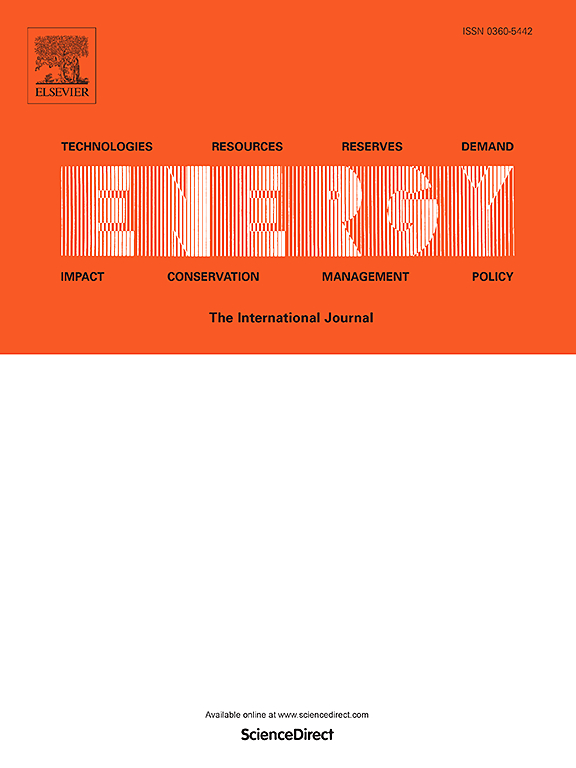Effect of gradient metal foam on phase change heat storage process under constant rotation condition: A numerical study
IF 9
1区 工程技术
Q1 ENERGY & FUELS
引用次数: 0
Abstract
To address the issue of uneven phase transition and slow melting rates of phase change materials during heat storage, a combination of active rotation and gradient metal foam is proposed for enhanced heat transfer in active and passive composites. The phase change energy storage unit is divided into three different regions, which are modeled numerically based on the enthalpy hole method, and implemented in the commercial software Fluent 2023. A numerical model of the melting process of a horizontal energy storage unit with metal foam under constant rotation is established. The impact of positive, non-gradient, and negative gradient pore combinations on the unit's average temperature, liquid phase rate, thermal capacity, and rate of heat storage is analyzed. The response and interaction between gradient pore combinations and pore density on melting time and average heat storage rate are further investigated using the Taguchi design method. The findings reveal that, with constant pore density, the positive gradient porosity combination has a more significant influence on melting time compared to non-gradient and negative gradient pore structures. Specifically, the optimal melting time for Case 12 (porosity combination 0.97-0.98-0.99, 30 PPI) is 13.17 % and 45.95 % lower than that of non-gradient structure Case 13 and negative gradient structure Case 14, respectively. Furthermore, Case 12 exhibits an average heat storage rate increase of 15.72 % and 86.06 % compared to Case 13 and Case 14, respectively.
求助全文
约1分钟内获得全文
求助全文
来源期刊

Energy
工程技术-能源与燃料
CiteScore
15.30
自引率
14.40%
发文量
0
审稿时长
14.2 weeks
期刊介绍:
Energy is a multidisciplinary, international journal that publishes research and analysis in the field of energy engineering. Our aim is to become a leading peer-reviewed platform and a trusted source of information for energy-related topics.
The journal covers a range of areas including mechanical engineering, thermal sciences, and energy analysis. We are particularly interested in research on energy modelling, prediction, integrated energy systems, planning, and management.
Additionally, we welcome papers on energy conservation, efficiency, biomass and bioenergy, renewable energy, electricity supply and demand, energy storage, buildings, and economic and policy issues. These topics should align with our broader multidisciplinary focus.
 求助内容:
求助内容: 应助结果提醒方式:
应助结果提醒方式:


